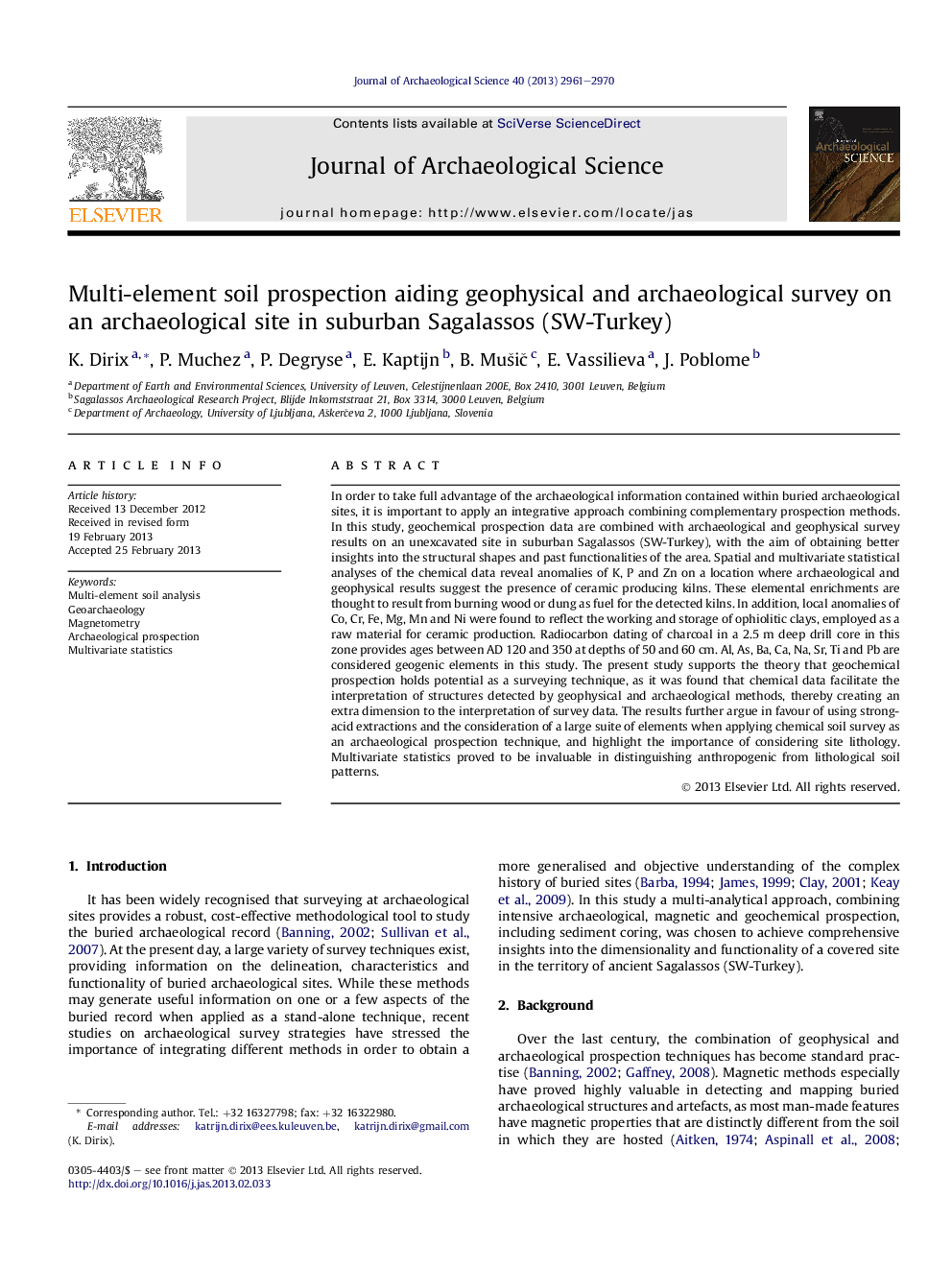| کد مقاله | کد نشریه | سال انتشار | مقاله انگلیسی | نسخه تمام متن |
|---|---|---|---|---|
| 1035498 | 943852 | 2013 | 10 صفحه PDF | دانلود رایگان |

In order to take full advantage of the archaeological information contained within buried archaeological sites, it is important to apply an integrative approach combining complementary prospection methods. In this study, geochemical prospection data are combined with archaeological and geophysical survey results on an unexcavated site in suburban Sagalassos (SW-Turkey), with the aim of obtaining better insights into the structural shapes and past functionalities of the area. Spatial and multivariate statistical analyses of the chemical data reveal anomalies of K, P and Zn on a location where archaeological and geophysical results suggest the presence of ceramic producing kilns. These elemental enrichments are thought to result from burning wood or dung as fuel for the detected kilns. In addition, local anomalies of Co, Cr, Fe, Mg, Mn and Ni were found to reflect the working and storage of ophiolitic clays, employed as a raw material for ceramic production. Radiocarbon dating of charcoal in a 2.5 m deep drill core in this zone provides ages between AD 120 and 350 at depths of 50 and 60 cm. Al, As, Ba, Ca, Na, Sr, Ti and Pb are considered geogenic elements in this study. The present study supports the theory that geochemical prospection holds potential as a surveying technique, as it was found that chemical data facilitate the interpretation of structures detected by geophysical and archaeological methods, thereby creating an extra dimension to the interpretation of survey data. The results further argue in favour of using strong-acid extractions and the consideration of a large suite of elements when applying chemical soil survey as an archaeological prospection technique, and highlight the importance of considering site lithology. Multivariate statistics proved to be invaluable in distinguishing anthropogenic from lithological soil patterns.
► Human influence on soil chemistry is detected on an unexcavated archaeological site.
► Enrichments of K, P and Zn are associated with burning of wood or dung.
► Clay raw material for ceramic production creates anomalies of Co, Cr, Fe, Mn, Mg, Ni.
► Geochemical survey facilitates interpretation of geophysical and archaeological data.
► Multivariate statistics are invaluable when studying composite soil data.
Journal: Journal of Archaeological Science - Volume 40, Issue 7, July 2013, Pages 2961–2970